John Hurrell – 9 June, 2010
Hipkins blends the lives of Jesus and the Devil together within a conceptual sandwich of positive and negative imagery where the ‘good' accounts of Jesus' actions are reversed and the ‘evil' words (by association) from Satan's story are visually normalised. His imagery presents fraught coded conflict as a metaphor for the internal psychological tensions experienced by God's favourite good man, Faust a scientist, who ends up making a pact with Satan.
The topic of religious education in this country is a fascinating one, and each of us has her or his own particular version to tell. When you chat to your friends you tend to discover more variety in family attitudes than what you expect. As far was Christianity goes, my own background was Methodist, and I was always gobsmacked whenever as a adolescent I visited a close friend who was a Catholic and saw the visual richness of his religious culture. Particularly images of Christ, Mary, and the fourteen Stations of the Cross.
Gavin Hipkins here presents in Starkwhite, on opposite walls of the big downstairs gallery, a series of fourteen images he first displayed at the Adam Gallery at Victoria University in Wellington - based on key events in the life of Jesus - and inspired by his own Catholic upbringing. These photographs are treated images taken from an illustrated Bible for children that came out in the last sixties. The Pre-Raphaelitish illustrations have had their tones reversed so that light and dark swap over and once blackish forms now glow. The colours have been knocked back so that they are grey tones with purple and a soft brown-green added. The framed, glassed-over images are displayed in chronological order as they occur in Jesus’ life, and are butted close to each other like a frieze.
Collaged into the centre of each photographed image is an inserted and integrated fabric patch that looks taken from a hippie’s pair of jeans. Onto each of these embroidered denim patches Hipkins has placed two or three word quotations that he has appropriated from Goethe’s famous tragic play Faust, in particular Part 1 which was published in 1808. This in conjunction with the tonally reversed imagery creates a startling wit, for Satan (Mephistopheles) is a central protagonist in Faust. Thus Hipkins blends the lives of Jesus and the Devil together within a conceptual sandwich of positive and negative imagery where the ‘good’ accounts of Jesus’ actions are optically reversed and the ‘evil’ words (by association) from Satan’s story are visually normalised. Hipkins’ imagery presents fraught coded conflict as a metaphor for the internal psychological tensions experienced by God’s favourite good man, Faust a scientist, who ends up making a pact with Satan.
Bible Studies has the two large narratives stacked in unison, the Biblical and Goethe stories layered together, not in parallel but with the images dominating over the language. Then there are the symbolic visual tropes within the visual components, a restrained hint of psychedelics in the sour acidic colouration, and the marketing of youthful ‘rebellion’ in the raggedy patches. These youthful pleasures are in contradistinction to the larger Faustian preoccupations of eternal post-death damnation.
It is easy to consider drugs as being amongst Hipkins’ collection of references, because of the flickering solarised colour (which are perhaps also the flames of hell) and the humour of some of his Faust captions. However because the colouration is greyish, that also suggests bodily decay after death. That might link to rigor mortis by association, or allude to philosophical rigidity on the part of Christian believers
With the background images clearly referenced to certain New Testament stories, and Jesus so easily identifiable in each, the Faust quotations of no more than three words are in contrast, minimal and highly oblique, in terms of their textual origin. They really could be from anywhere, and one has to accept Hipkins’ word that they are translated Goethe. It is not self-evident.
Apart for the humourous or acerbic comments that Hipkins is making with his carefully selected juxtapositions, the words also serve as a pointer that directs you to Goethe’s play: an indicating arrow. I say that because some of the Goethe text fragments are highly opaque in terms of what Hipkins might be thinking of in relation to the actions of Jesus. Others though are graspable immediately, and extremely amusing, such as Ride On! (read “Right On!”) with Christ (now as counter-culture hero) standing on the prow of a fisherman’s boat calming the waves of a fierce storm as he advances over the waters of the Sea of Galilee. Or No End where Thomas the doubting disciple probes with his finger tips the nail wounds on the resurrected Jesus’ palms and the lance wound in his side.
Curiously though, Hipkins’ photographic treatment of the New Testament illustrations changes them so they take on visual properties more linked to say, the emotional intensity of El Greco. The mood of these transformed swirling, tremulous Biblical dramas is then further accentuated by their being grafted to the story line of Faust, particularly the sufferings of Gretchen the woman he (with the Devil’s help) seduces, gets pregnant, then abandons - after she drowns the child and is condemned. Of it the philosopher Schopenhauer once wrote:
The great Goethe has given us a distinct and visible description of (the) denial of the will, brought about by great misfortune and by the despair of all deliverance… in the story of the sufferings of Gretchen. It is a perfect specimen of the path, which leads to the denial of the will not through the mere knowledge of the suffering of the whole world which one acquires voluntarily, but through the excessive pain felt in one’s own person.
The semantic juxtapositions within these tightly compressed, semioticly complex photographs are particularly clever and rich in nuance. Well worth exploring.
John Hurrell
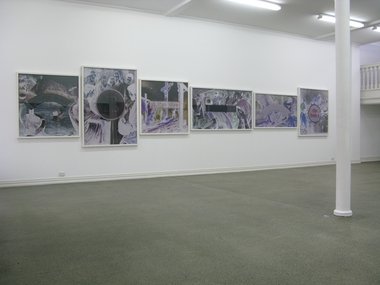
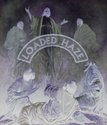
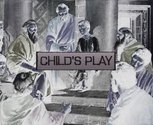

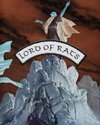
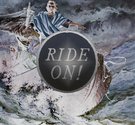
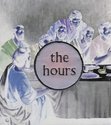
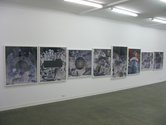
 Advertising in this column
Advertising in this column Two Rooms presents a program of residencies and projects
Two Rooms presents a program of residencies and projects



This Discussion has 0 comments.
Comment
Participate
Register to Participate.
Sign in
Sign in to an existing account.